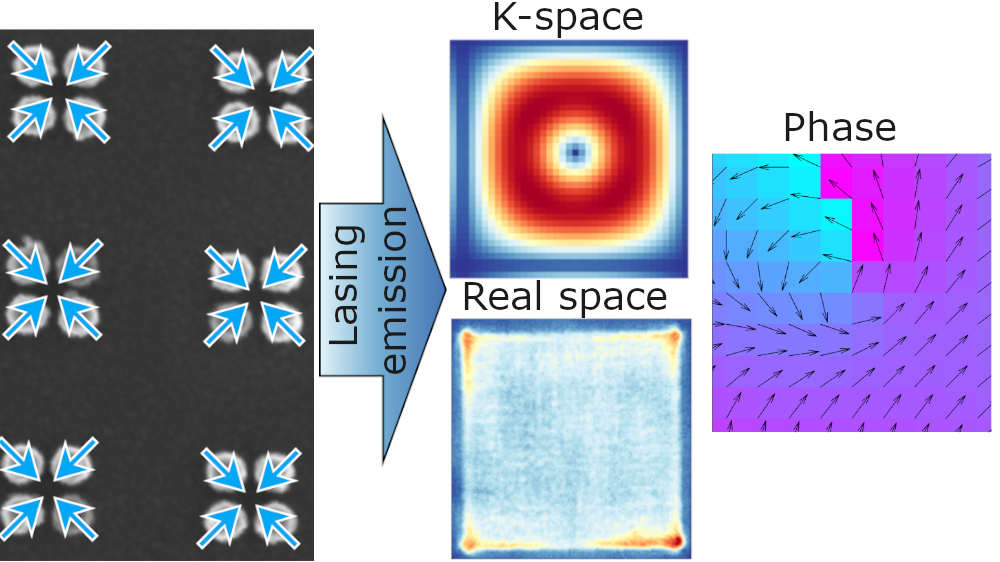Lasing from a bound-state in the continuum of a plasmonic lattice published
As part of my Marie-Curie Action TEBLa, I am thrilled to investigate the role of topology in lasing effect of nanoscale photonic systems.
In our new paper “Quasi-BIC Mode Lasing in a Quadrumer Plasmonic Lattice” just published on ACS Photonics, we show that a plasmonic lattice composed of quadrumers of gold nanoparticles enables lasing in a mode of extremely high Q-factor and out-of-plane polarization: a bound-state in the continuum.
As the name suggests, bound-states in the continuum (BICs) are particular states that are embedded in a continuum of states but are completely decoupled from them, due to symmetry or other protecting mechanisms. This means that although BICs have the same energy of the continuum modes, they cannot propagate or disperse in the system as the latter, and appear extremely localized. BICs are a general wave phenomena, but in photonics have desirable features that are appealing for applications in lasing, filtering, or sensing. In particular, if light can escape through suitable leak channels, then the BIC can be observed (now as a quasi-BIC) with a very high quality factor (the ratio of stored energy to the power loss), and its far-field radiating light shows a non-trivial winding of the polarization vector, associated with a non-zero topological charge (at the vortex origin). These modes are particularly robust against imperfections since they can disappear only when annihilated with other BICs of opposite topological charge. Although BIC solutions appear for certain symmetries, designing and realising them in a controllable way is a goal for many platforms with possible lasing applications.
In our recent paper we experimentally demonstrate that plasmonic lattice composed of complex unit cells of gold nanoparticles enables lasing in a quasi-BIC mode, with a strong out-of-plane character. We observe lasing emission and reveal the quasi-BIC nature of the lasing mode by comparing polarization measurements with theoretical mode analysis and electro-magnetic field simulations. We show that the edges of the sample can also provide a valid leak channel for the quasi-BIC to be observed: this novel feature leads to a stronger lasing emission from the boundaries rather than from the bulk, and provides us a way to identify the polarization winding, that is the topological charge which makes the mode robust against lattice imperfections.


